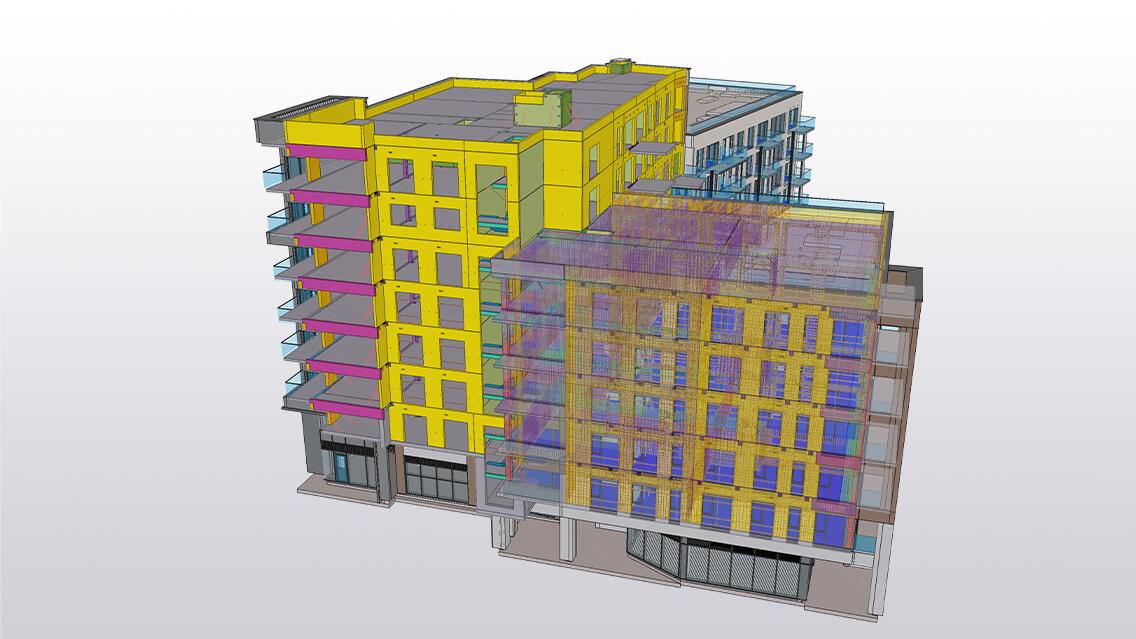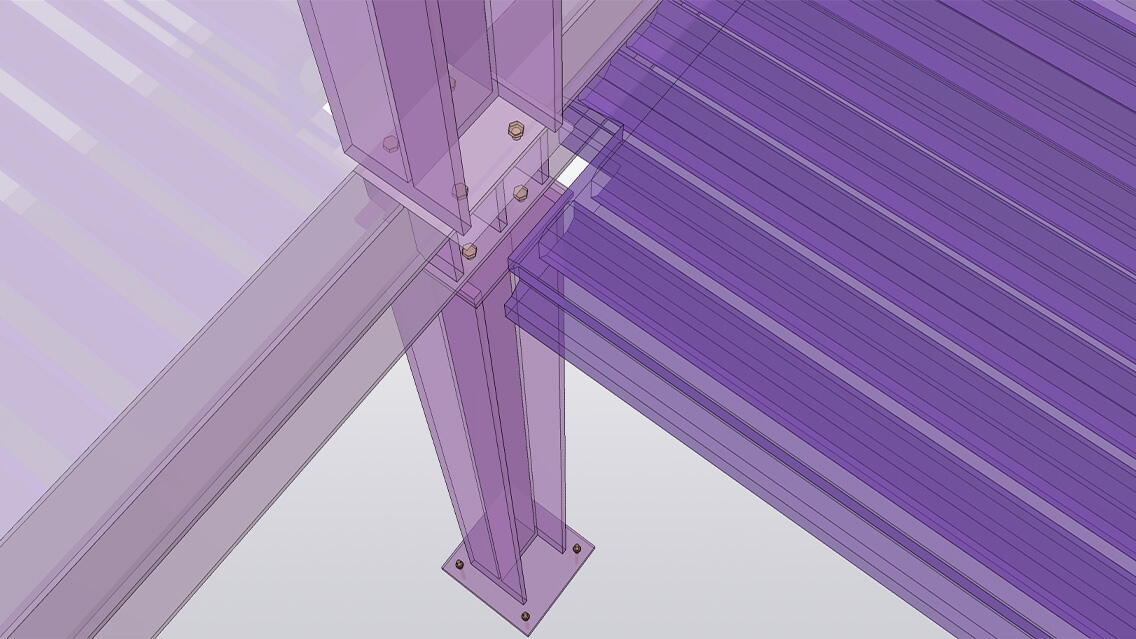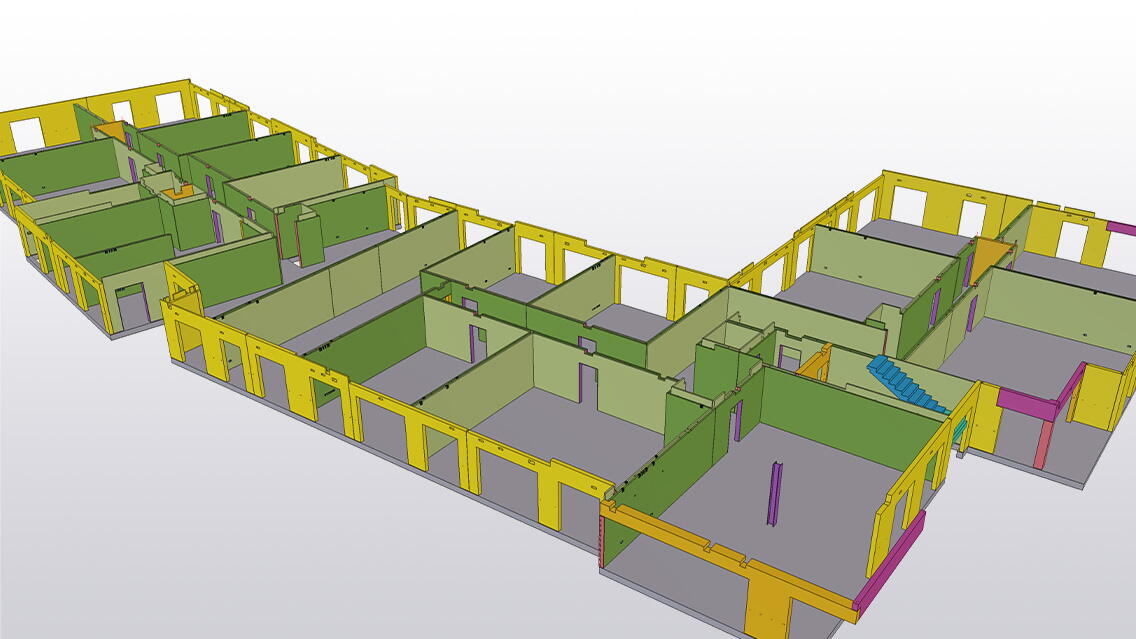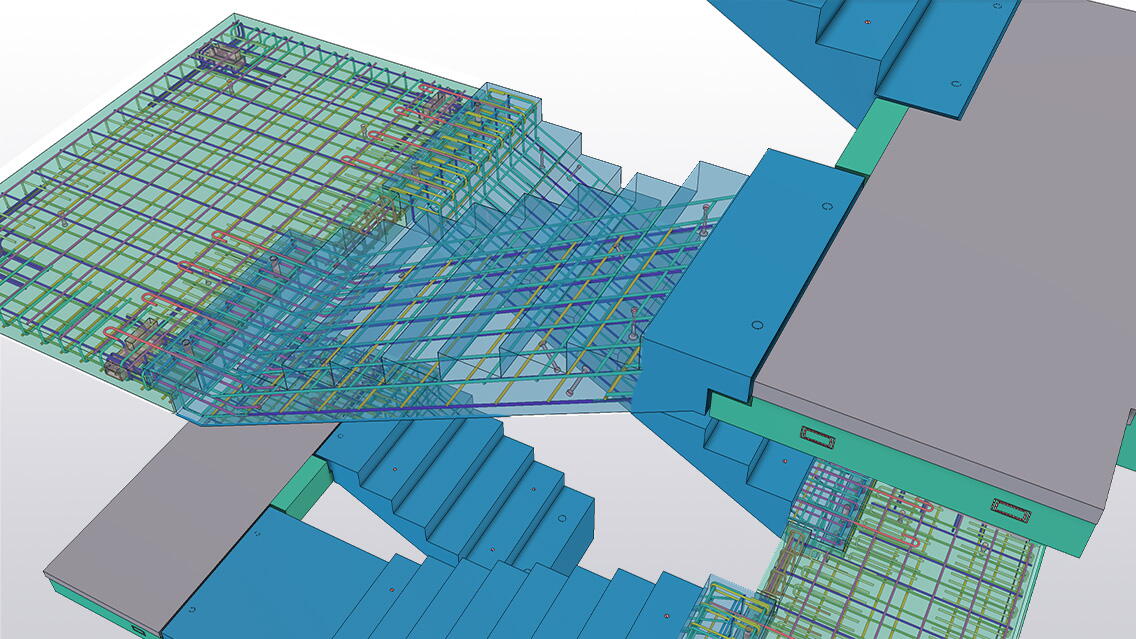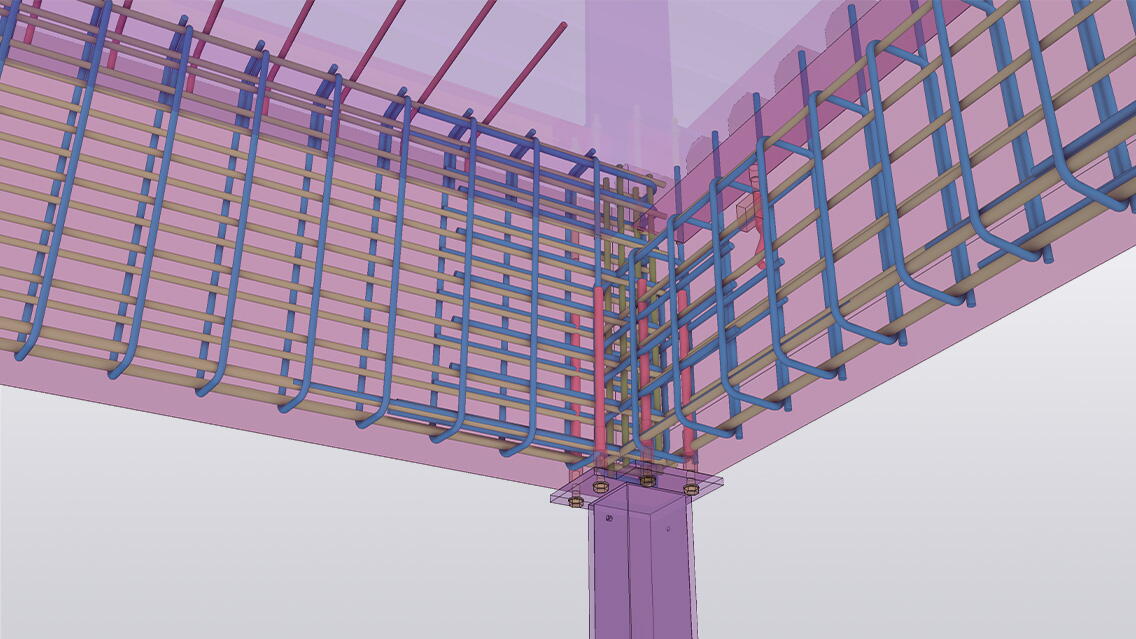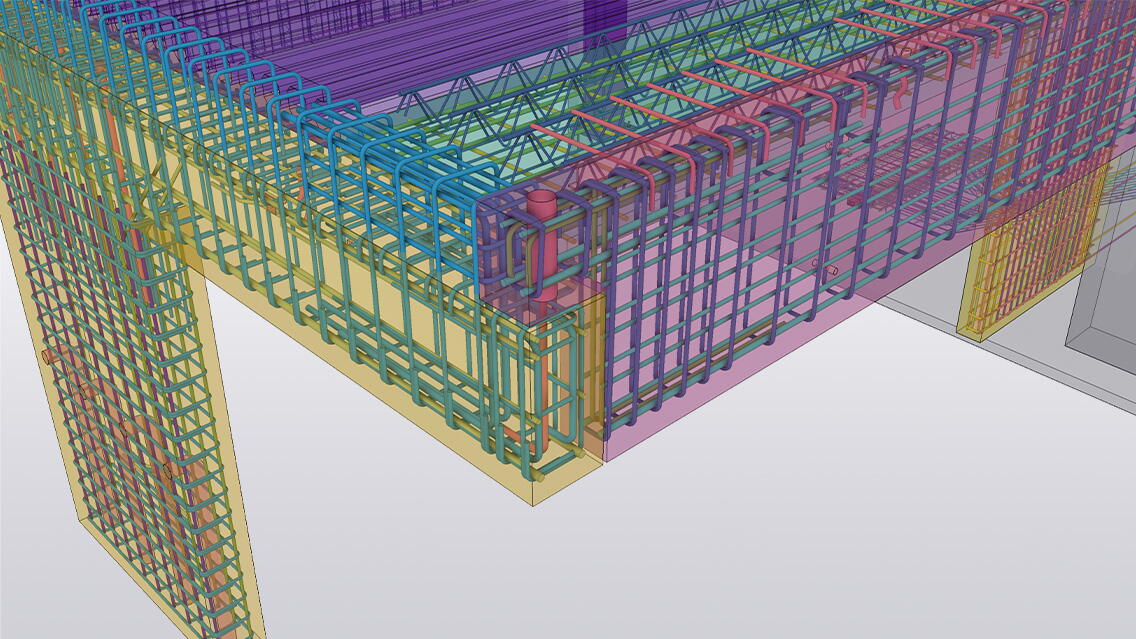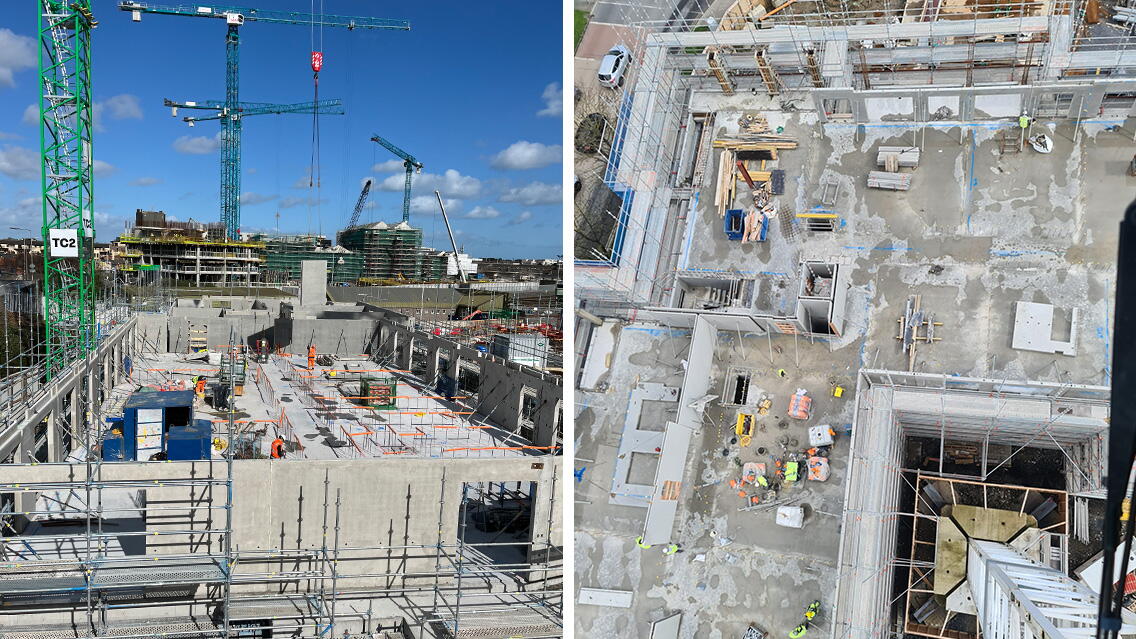Block D of Airton Road is part of an expansive residential project set to transform the former site of Gallaher’s cigarette factory in Tallaght, Dublin 24. This Strategic Housing Development (SHD) covers 2.79 hectares and includes:
• The demolition of the existing factory and warehouse buildings on the site, which collectively cover approximately 10,076.8 square metres.
• The construction of 502 apartments, distributed as 197 one-bedroom units, 257 two-bedroom units, and 48 three-bedroom units. These apartments are spread across six blocks, ranging from four to eight stories high. Each residential unit comes with private balconies or terraces facing north, south, east, or west.
• The creation of residential amenities, three retail units, a creche, and areas for services and bin storage, covering a non-residential floor area of approximately 1,838 square metres.
• The provision of 202 car parking spaces, located at basement and undercroft levels, and 584 bicycle parking spaces.
• The establishment of vehicular, pedestrian, and cyclist access points from both Greenhills Road and Airton Road, along with road improvements and pedestrian crossings.
• The execution of all associated site development works, including open spaces, landscaping, boundary treatments, plant areas, rooftop photovoltaic (PV) panels, waste management areas, and the provision of services, including ESB substations. This development signifies a new chapter for Airton Road, bringing a fresh wave of residential and commercial opportunities to the area.
Challenges and achievements
KPC (Kilsaran Precast), the specialist subcontractor, has been responsible for the Airton Road building design, which has been coordinated with Architects (RAU - Reddy Architecture + Urbanism), main Consulting Engineers (Waterman Moylan), M&E (Fallon Design), and the main contractor (Walls Construction).
The structure is a blend of various precast elements, meticulously detailed for on-site assembly and monolithic action. The building is divided into two zones by a movement joint to control shrinkage and expansion movements. The elements include internal twinwalls, 200mm thick, forming a cross-wall system, detailed with internal ties and splices placed into the cavity for continuity. The two stair cores are 250mm twinwalls designed to provide 120 min.
These twinwalls were manufactured at KPC’s production plant in Oranmore (Co. Galway) and include provisions for pre-coordinated electrical and mechanical sockets. Peripheral walls of the building are 180mm solid walls, designed to bear loads from the façade and external balconies, and were manufactured at KPC’s production plant in Brownstown (Co. Kildare) with vent openings.
The floors, designed as diaphragms, distribute horizontal wind loadings to the cross-wall system and core walls. These floors are made up of 200mm hollowcore units and 75mm structural screed poured on site. In corridors and areas where balconies connect back to the internal floors, lattice planks were used. The floor build-up in these areas consists of a 65mm plank with cast-in girders and a 210mm on-site poured compression layer. Both hollowcore and lattice planks were manufactured in Galway. Stairs and solid landings, also detailed in Galway, were connected to the precast walls using RVK billets (Invisible connection system).
The project also required some structural steel in the form of beams and columns supporting the floors, which were modelled, detailed, and fabricated in the Kilsaran Precast factory. It’s noteworthy that the first floor was designed as a transfer floor since most of the walls do not extend down to the foundation. Some load-bearing wall elements were designed and detailed to function as deep beams or spanning walls, necessitating careful consideration of their connections and the correct transfer of loadings.
The Tekla model was more than just a 3D visual model; it contained all of the necessary information and level of detail to produce each precast member, as well as descriptions for the Kilsaran Precast site crew to reference during installation and temporary works. The model is used for coordination and construction of the building using Trimble Connect. Automated Manufacturing Plants Kilsaran Precast, utilising one of the world’s most advanced precast Manufacture plants, manufactured all precast walls for this project. The advanced manufacturing technology employed for twinwall and solid-wall production presented numerous challenges at the modelling and production stages, including the integration of services, electrical components, and construction constraints, as well as the connections between all precast elements.
The introduction of a new carousel system for the advanced production of various products, has proven to be a significant improvement over traditional cast in-situ methods.
Based on the Tekla model, the Kilsaran Precast team exported external output files to the automated plant where each precast element was manufactured by robots and advanced manufacturing machines. This innovation has significantly accelerated the manufacturing process and minimised manual labour at the plant.
One of the major challenges for this project was the extremely demanding lead-in time and the integration of the full precast structure on-site. Tekla software has met all expectations for the design process in this project, providing the most efficient tools and components for creating the 3D model and all accompanying documentation. A high level of collaboration within the design office was achieved using advanced tools provided by Trimble, such as Tekla Model Sharing, Trimble Connect, and Tekla Tedds.
As a precast company, Kilsaran Precast understands the importance of collaboration and coordination throughout the entire process of manufacturing, design, logistics, and site installation within a single company. Everyone involved in a project and manufacturing can view all the latest updates, changes, manufacturing status, reference models, and production sheets in real-time within the Trimble Connect platform, which is fully linked with Kilsaran’s Tekla models, facilitating collaboration based on writing out the main model to Trimble Connect via the cloud.
Using Tekla software
- SAA manufacture system (unitechnik files), EBOS integrated software (PXML files) for exporting to both management software and machinery/processing systems.
- General arrangement drawings, including all connection details, were efficiently produced from the 3D model.
- Engineers shared IFCs and Revit files.
- The delivered documentation with the BIM model allowed the Kilsaran Precast team to quickly check and avoid issues with potential clashes and any unforeseen issues in their automated manufacturing plant.
- Custom components: Double wall details and Kilsaran individual custom components with Firm folder.
- UDAs: Attribute importer.
- The 3D model allowed for easy viewing and detection of any clashes.
- Site reinforcement drawings, schedules, and all element shop drawings were generated from the Tekla model.
- Production machine files (Unitechnik, PXML files) were automatically exported to the automated manufacturing plant. This allowed the manufacturing plant to plot the elements, cut and place the reinforcement, install automated shuttering, and place all cast-in items automatically, significantly reducing manufacturing times.
- Delivery and sequencing plans were created for logistics and site coordination.
What does Kilsaran Precast Ltd say about the project?
“The successful execution of the Airton Road, Block D project owes much to the BIM modelling software Tekla and the cloud-based collaboration platform Trimble Connect. The use of IFC files as the standard format for collaboration has allowed our Tekla model to integrate inputs from Architects and Mechanical and Electrical Engineers, thereby facilitating effective coordination.”
- Bartek Kikosicki, BIM Engineer / Tekla Specialist at Kilsaran Precast Ltd

